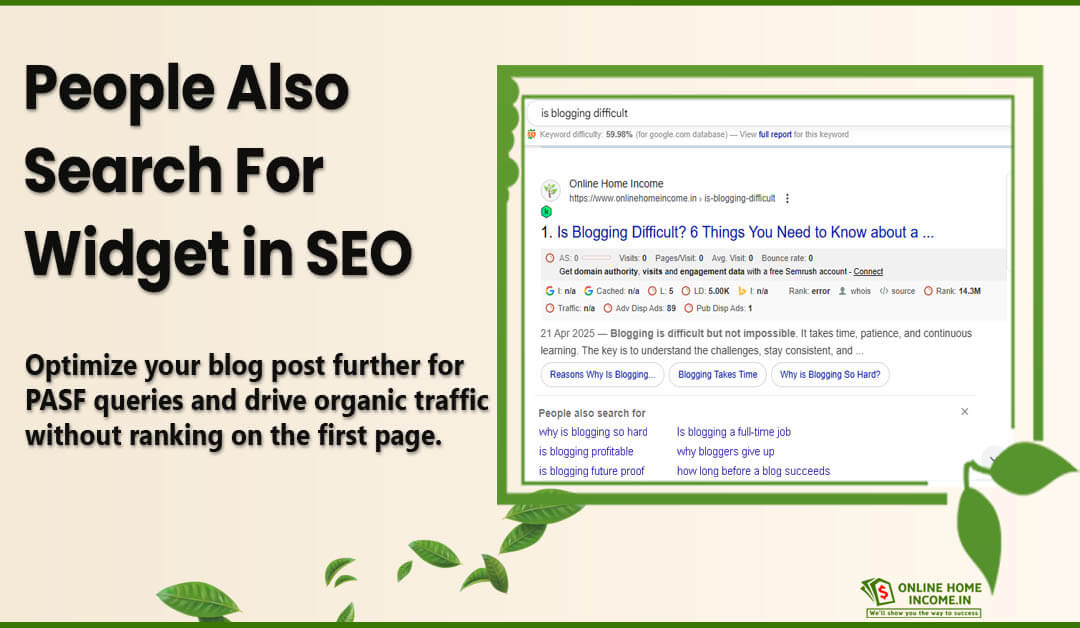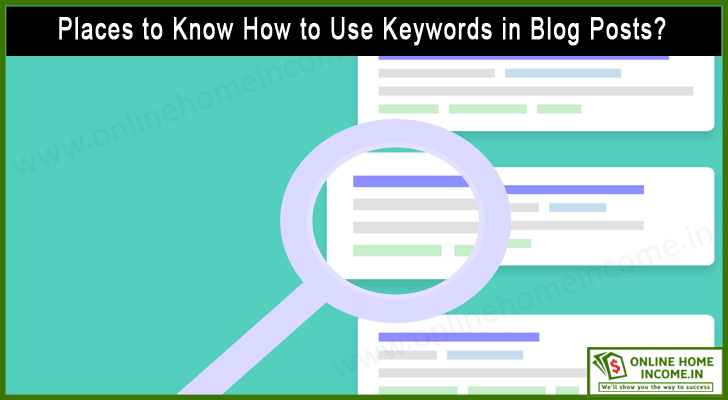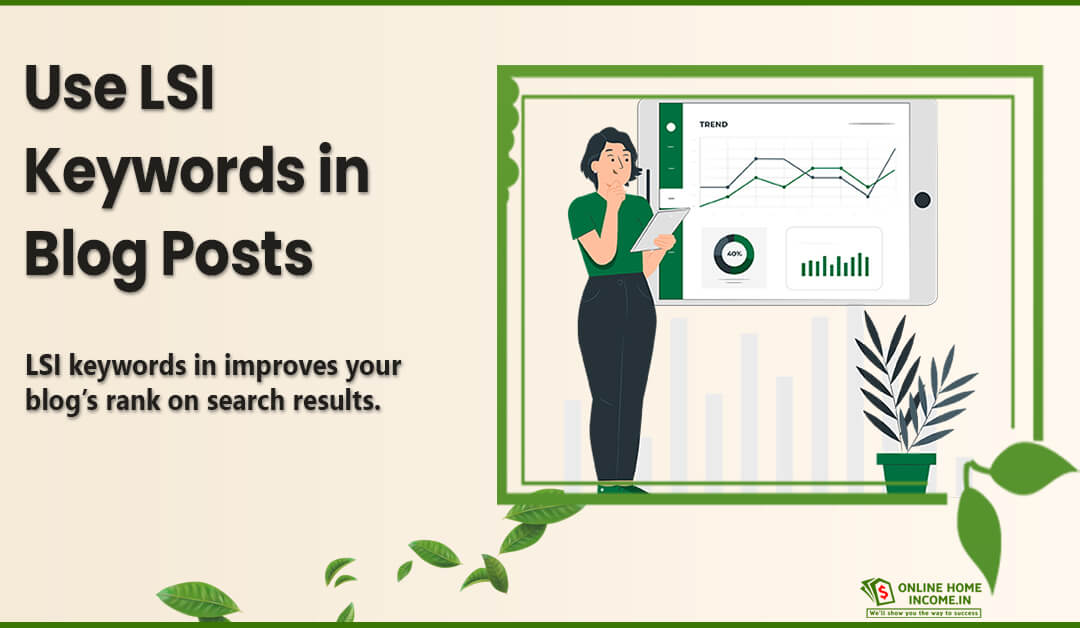Are you starting your blogging journey? You will need solid research and experience to make your blog stand out. From this article, you will learn how to research for your blog post.
Blogging helps you share your experiences and learning with anyone online.
You can make any ‘ordinary’ piece of information look attractive with the right usage of words with rich styles. Such is the power of blogging today!
Many bloggers have turned their blogs into primary income sources. Choosing the right blogging niche can be your ticket to fortune.
Sometimes it can also bring you down.
Why?
Because your blog is your online identity. If your claims are right and helpful to viewers—your views and subsequent revenue will increase.
However outdated, misinterpreted content or doesn’t follow SEO standards will lead to losing followers. Your blog can be ignored by search engines in such a scenario.

Today every blogging niche has a blogger. It does not mean you do not have a chance.
Every other day new cooking blogs, lifestyle vlogs, or reviews for popular restaurants are rising.
The surprise is– that these blogs get views in millions! How is this possible? It is where your creativity and innovation come into play.
How do I know if what I am going to do is already done? How do I be creative? It is where you need to do research for your blog post!
Solid research on the content forms the foundation for starting your blog. The research will be a continuous process throughout your blogging journey.
Read further to understand how you have to carry out your blogging research.
How to Research for a Blog Post?
It is important to research blog topics to make sure your blog offers something new. But taking that first step can be very confusing.
Say, you are willing to start a blog tutoring on terracotta jewel making. Will you get a good number of viewers? What would you be teaching? Will you and your audience be able to profit? What if students discontinue?
So many questions pop up. Those questions can even make you quit your blog before starting!
Avoid this blackout by doing systematic research before writing a blog post. If you do not have a fixed topic to blog on; then explore various ideas, and check if the blog topic has an audience.
A very important research component includes finding target keywords to make your blog appear on the top.
SEO Tools like Keyword Planner, AHrefs, and SEMRUSH can help you analyze keyword volumes and trends.
- With the right keywords placed in strategic positions in the blog post satisfy your first reader (a.k.a. the search engine).
- Then you need to see the existing bloggers in the area and their offers.
- After this comes designing a proper game plan or road map. It involves futuristic planning of how your content would be organized and offered in your blog across posts.
- Then move on to the finer details of each post. Elaborate on each topic and subtopic with clean and rich writing styles.
- Collect details on the additional resources you would need to enhance your blog.
For instance, a flowchart, YouTube video, or live session on your channel.
With this brief, let us understand how to perform research in a stepwise manner.
1. Brainstorm Topic Ideas for your Blog Post
Start the research for your blog post by shortlisting topics you will be writing on. Answer these questions –
- Do you have a passion?
- What are your areas of expertise?
- Do these areas have insufficient information or lack content?
- Is the niche having a trend? Seasonal or always in demand?
- Does it have the potential to make profits?
Google can be your go-to way to analyze if your passion and experience have a chance to reach a large audience.
Google Trends can give more accurate results to see if your ideas have region or zone-wise audiences.
Once you are convinced that your idea has potential, analyze the lifetime of your blog. Check if you can provide enough content before the trend dies out.
If you feel you are inexperienced and are not successful in any specific hobby, you can find new blogging niches that interest you!
Say, if you are an average student, you need not necessarily blog on topics like exam hacks or sports. You can contribute to existing popular niches in new ways, like cooking recipes in hostel rooms, quick food ideas during exams, etc.
- Googling about blogging trends in different niches can help you research blog topics to be successful.
- Social media is a great way to get ideas for blogging. A lot of groups, threads, and discussions happen on Facebook, Whatsapp, and X (formerly Twitter).
These platforms can be great ways to figure out your target audience and convert them to regular viewers. The key here is to understand their expectations and plan to revise your content accordingly.
2. Perform Keyword Research
The first readers for your blog are search engine crawlers. Search Engine Optimization (SEO) allows these crawlers to list rich content at the top of search results.
For your blog to reach a wider audience, it is necessary to follow some SEO metrics. Doing keyword research is an important element.
Keywords matching search queries are important to rank your pages at the top of search results.
— So you must list the right keywords for your blog topic that match your user’s intent.
— SEO Tools like Google Keyword Planner, SEMRUSH, and AHrefs are good blog research sources to explore and use extensively.
Shortlist keywords that are trending and specific to your blogging niche. Ensure the keywords are simple and have a high potential to reach a large audience. Trending keywords can also help you choose a profitable blogging niche.
Next, you need to know how to insert them at strategic positions in your blog. Search engine bots scan the entire document before listing them.
- Including target keywords in the first few lines of your blog pushes your organic ranking.
- Title, meta description, and paragraph headers are other places to add your focus keywords.
Understand the usage of primary and secondary keywords for better reach.
— The primary keyword helps you rank your blog among the top.
— Secondary keywords add more coverage value.
— LSI keywords are synonymous words of the primary keywords.
Using the right mix of keywords makes your blog valuable.
3. Analyze the Competitors and Top-Performers
The next step is to research blog examples done by peers in your chosen blogging niche. It is the best way to see how they are faring in terms of viewership, branding, and monetization.
If your blogging topic is popular and flooded with content, understand how frequently they are blogging and staying at the top.
Analyze how they have gained the required experience (Knowing their history can give you hope and motivation to progress.)
Google results show the best blogs under any category.
For Eg; consider a query for a DIY airplane tutorial.
The top ten results will show how a similar idea has been conveyed in different attractive formats.
Learning best practices followed by top performers can help you improve traffic and organic ranking.
A few points to consider in this research are;
- How the blogs are SEO-friendly?
- What keywords are they using, and how frequently are they used?
- Are they following a common or unique template?
- What is it that makes their followers come back for further posts? How are they making money?
- Are their pages coming from organic search results?
- Do they have related social media channels?
You can try mentorship under top bloggers and digital marketers to get a better vibe. It can be useful if your blogging topic is relatively new.
4. Decide the Blog Post Format
Following the preliminary research for your blog post, you must decide how you want to outline your content.
Decide whether you will be following a unique style or stick to the formats of top bloggers.
In the beginning, try sticking to common formats and focus more on content quality.
Content Management Systems(CMS) like WordPress provide various layouts and templates according to your preferences.
Depending on your blog topic, purchase a WordPress theme and install it. Numerous plugins are offered to organize and protect your blog content online.
Let us see how we can choose templates for some common topics.
For quick fix solutions, ‘how-to’, and ‘DIY’ blogs, look for instruction style templates.
— The classic list style is evergreen for instructive blogs.
— Adding media, advertisements, and hyperlinks should not distract your focus area from users.
For stories or experiences, plan the content flow and places in your blog to insert illustrations and graphics.
— Templates like ‘Steps to do after …’, ’10 things to consider…’, ‘How to do…’, etc. are good ways to convey experiences in a clear and friendly format.
For tutorial blogs, plan how you are going to teach in a phased manner.
— Prepare your lesson slides, student enrolment, chapter-wise questionnaires, examinations, certifications, etc earlier.
— WordPress provides Learning Management System(LMS) tools to achieve all features mentioned above.
Based on the complexity of your course, say a simple drawing class to a university-level on web development, an LMS plugin can satisfy your requirements.
5. Collect Materials and Information from Authoritative Sources
Now we come to the planning of our blog post. Getting data from blog research sources and turning it into insightful information will help your viewers benefit.
- Install the latest blogging tools and wizards to make the job easy.
- Prepare a flowchart or mind map with the ideas to discuss. It will give you a high-level design of what will be covered across various blog posts.
- Add the information collected as bulletins then and there.
- Make notes on what examples or stories you will discuss.
- Your content should be supported by relevant media. Highlighting your content with images like flowcharts, illustrations, and GIFs can keep viewers hooked.
Today, it has become a trend to include a YouTube video from one’s channel to help people with minimal literacy understand blog content. This way, your video, and blog get equal viewership.
A simple image slideshow with a voiceover can be sufficient to grow your blog traffic.
If you are targeting affiliate marketing, you need to do a proper brand analysis before you blog on products or businesses.
- A story or personal experience about the product reviews must be true and not hyped.
If you are adding claims, statistics, or statements that you do not own, be sure to include source references. For instance, if you are writing a blog on limiting screen time for toddlers, you must mention the exact guidelines mentioned by groups like the American Association of Pediatrics (AAP). Failing to do these, and giving your own numbers can destroy your credibility.
6. Organize the Available Materials and Information
Once you have planned how to cover your ideas across blog posts, start drafting your first blog.
Organize your content with outlines before elaborating on your idea.
- Start with a brief blog post introduction, followed by the necessity to address the problem at hand.
- Then go on to describe the solution you are offering across subtopics.
- Finally end with a conclusion, showing that you have the best solution provided after thorough research for your blog post.
Decide on the approximate word count for each topic and subtopic. Maintaining a uniform word count across each topic gives a good visual appeal to the viewer.
Give an index in the beginning for viewers to directly jump to subtopics they are interested in.
For beginners, it is very important to focus on the quality of the content provided. You must follow clean writing styles.
A lot of tools are available to aid bloggers in giving grammatically correct content. You may take the help of grammar and spell checker tools like Grammarly, Hemmingway, etc.
Compute the readability score for your blog. These scores decide the level of language literacy required by your readers.
Aim to score such that your blog can even be read by school students. Fleischer scores around 60-70 is a good target for beginners. Stick to small sentences and use active voice.
Check keyword count and their positions in your blog. It is crucial when following SEO guidelines.
Avoid keyword stuffing and insert them with a density of 2.5% of your content.
7. Brainstorm Meta Tags, Header Tags
The web page containing your blog has several tags, defined in the HTML web designing standards.
The Meta tag in the Title part of your webpage is what search engines look for.
The description you provide here will appear in Google search results, under your blog page title. So the meta title and meta description is important for strategically placing researched focus keywords for the blog.
META-TITLE
It is a good practice to keep your titles simple yet unique to be etched with viewers.
Research blog examples listed in Google and see their titles directing you to their pages.
- Say, you wish to start a cookery blog. In a sea of recipes, brainstorm words less used but catchy enough to put your recipe on the top.
- Words like ‘Authentic’, ‘homemade’, ‘traditional’, etc. can make your recipe blog title kindle viewers’ taste buds and ‘click’ your blog link.
META DESCRIPTION
The meta description needs to be concise and to the point to show what your blog contains. If the users find their exact query addressed, they will visit your blog.
HEADER TAGS (H1, H2, …. H6)
Header tags are seen by search engines to locate focus keywords. These are where you need to place your topic and subtopic titles.
Use sufficient header tags to cover your content in depth. Header titles should contain your keywords. The frequency of keywords is important for SEO friendliness.
However, keyword stuffing to increase the count can impact your blog negatively. The titles should provide clear intention on what is being covered in the text that follows.
8. Prepare Images, Infographics, etc.
Any piece of information with written text alone can be boring. Not all your readers are skilled enough to read your content.
They may be impatient to skim through every line. Make it a point to include media while doing the research for your blog post.
- Images, illustrations, infographics, GIFs, etc. are helpful for readers with minimal literary knowledge or little time to read.
- Flowcharts, gifs, embedded videos, or YouTube links can be provided at various parts of your blog. This can capture viewers’ attention and convey your subtopics easily.
The usage of several media can improve the branding of your blog. Teasers, ‘shorts’ videos, and reels with select images used in your blog can be shared over social media.
It will help your viewers know what your forthcoming blog will provide. Such methods keep your viewers hooked.
Graphics and images should mostly be your own if it is something unique you are providing. These increase your credibility and prove to your readers that you have something new to offer.
If unavoidable, use images with proper credits provided. Add keywords to alternate text tags used in images while designing your blog page.
These are checked by search engines while using SEO metrics to list blog pages.
Creating a board of images in image-based social media like Pinterest can help those looking for new ideas locate your blog easily.
Such platforms are mainly aimed at providing idea solutions.
Importance of Research for a Blog Post before Writing
Like any other profession, you will need to do thorough research for your blog post before your first attempt.
Good research is essential to make you appear credible, decide your future in blogging and ensure you give frequent content.
Without knowing what you are going to blog about, your journey can have a premature ending.
Collecting the required information will be a big boost to your confidence. Learning from peer experiences, from experienced bloggers will show you that blogging is not very hard.
The key is to be consistent in your efforts, which will slowly pay off exponentially. A crucial part of going through blog research sources is to ensure that they are updated to the latest trend.
It means you will have to keep getting back to the research part many times during your blogging journey. Research is not a one-time step.
Getting frequent feedback from your viewers and researching how to handle their requests, gets you repeated viewership.
Research provides answers to a lot of questions and confusion. The facts you state, claims made, and scenarios depicted must be clear and concise with the right references.
The more your blog has clarity of content, the more credible your viewers find you. Then on, the content you publish further will be received with high anticipation.
Keyword research should never be ignored when blogging today. With the right tools and plugins, make use of the rich features and focus on providing SEO-friendly blogs.
With the right content, supporting media, and adequate keywords, your blog has all it needs to be at the top! So do not forget to research for a blog post and have a smooth blogging journey.









